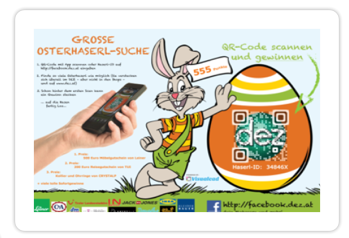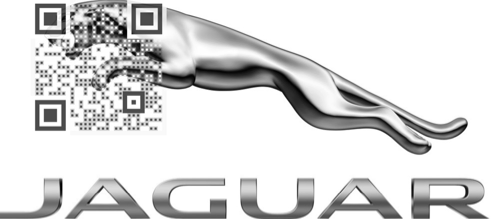Visual QR Codes in Action
Visual QR codes hit their Mark with the World’s Biggest Companies! 
The quick-response codes continue to evolve in ways never before seen. In my capacity as the co-founder and CMO of a QR Code company, I’ve watched with fascination as QR codes have come surging back to life. Part of the dilemma that developers in the QR codes industry faced, related to the intrinsically unappealing nature of these marvels. Many marketing departments using traditional QR codes used them incorrectly and failed to achieve their targeted goals. In hindsight, the error was not structural – as QR codes are sound – it was merely aesthetic. And given our culture of ‘that which looks good sells well’ it makes perfect sense. Coming to this realisation was easy; translating this objective into a workable solution was the real challenge. Thanks to some ingenious brainstorming by leading industry experts, visual QR codes are now firmly established. Better yet, they rank among the most promising marketing resources in a world that is turning to eCommerce like never before. Smartphones and the convenience they offer mean that consumers and passersby can now access marketing messages in real time – wherever they roam. Enter the era of the visual QR code; a marketing marvel that promises to turn convention on its head and recalibrate the way that we receive messages, rewards, information and multimedia. 
QR Codes in Action: Successful Marketing Campaigns
There are many successes with visual QR codes. One of my favourites is a campaign in the land down under. This success story takes us to Tyrol, Australia. A shopping mall – the DEZ Shopping Mall – was looking for creative ways to boost traffic. On average, the mall enjoyed the patronage of some 25,000 visitors. The challenge was to find novel ways of attracting the attention of shoppers and passersby so that they would interact more with the DEZ activities available on Facebook. The idea was to create a visual QR code in tandem with a mobile signup page. The goal was to get as many people to scan the QR codes as possible for the Easter Bunny promotion. The real test was how to engage users in such a way that would want to scan the QR codes. This was achieved by way of incentivising each scan with a points system. Folks were simply required to login and like the DEZ Mall’s fan page on Facebook to get started. DEZ and my company created 177 Easter Bunny posters with virtually invisible QR codes. These posters were strategically placed around the mall. Over a 10-day period participants got points for every scan – sometimes with prizes up for grabs too. By the conclusion of the promotional period, the top 3 participants received the biggest prizes on offer. These are the results we collected from the promotion: 10,000 scans were generated, the visual QR codes with the Easter Egg and QR code juxtaposed were scanned 150% more than the regular black & white QR code.
James Richardson Duty Free Case Study
Yet another successful visual QR code campaign was recorded with the James Richardson Duty Free shop at Ben Gurion International Airport. Like other campaigns, the problem was insufficient traffic. To counter this, we sought innovative ways to engage customers by way of an appealing visual QR code. Display ads were set up – one with a traditional QR code and the other with a visual QR code. Note, the purpose of a visual QR code is to appeal to people in such a way that they are inclined to scan it. In the Duty Free case study, we set up 2 displays – one with the traditional QR code and one with the visual QR code. The visual QR code would take browsers to an optimized page while the regular QR code took browsers to the standard website. To boost the effectiveness of the visual QR code, the James Richardson logo was incorporated into the QR code. Both scans gave customers 50% off the product of the week. As it turned out, the visual code reeled in 150% more traffic than the traditional QR code. But the true success of the campaign was the increased call to action rate: 100% more coupon redemptions were recorded over the standard QR code. The overall figure for Return on Investment was 250%.
Other Successful Visual QR Code Campaigns
- Hewlett Packard Denmark used a visual QR code to promote its HP Envy Rove. The results of the mobile survey campaign reflected higher calls to action and high levels of user engagement.
- Motorola had a visual QR code commissioned to help boost brand awareness. The scanned QR code took users to the Motorola website where they could browse the latest hi-tech phones and devices.
- Jaguar in Hong Kong – the high-end car manufacturer – used a visual QR code campaign to engage mobile smartphone users. The visual QR code took users to the Jaguar website where it provides a rich multimedia experience for potential buyers.

Visual QR codes are fast becoming the go-to solution for individuals and companies. I’ve seen a spike in interest since the widespread adoption of this innovative technology. Not only does the visual QR code look better than the traditional QR code, but it encourages people to stop and really take notice. The call to action power of these algorithmic codes is second to none and customers are responding in an overwhelmingly positive manner. On a personal level, I’ve been tremendously impressed with vCards which use the power of QR codes to make a traditional business card a fully functional multimedia marketing message. By linking to an optimized website, a standard business card allows you to instantly terraform to a virtual masterpiece. The future of QR codes is looking bright with the ‘quantum leap’ that the industry has taken in recent times. As we move towards greater invisibility of visual QR codes, so we’re likely to see substantially increased levels of engagement from a large and growing mobile base.

About the Author: Uriel Peled is a co-founder and CMO at Visualead, where he is working hard on revolutionizing the QR code with their patent pending Visual QR code solution.
